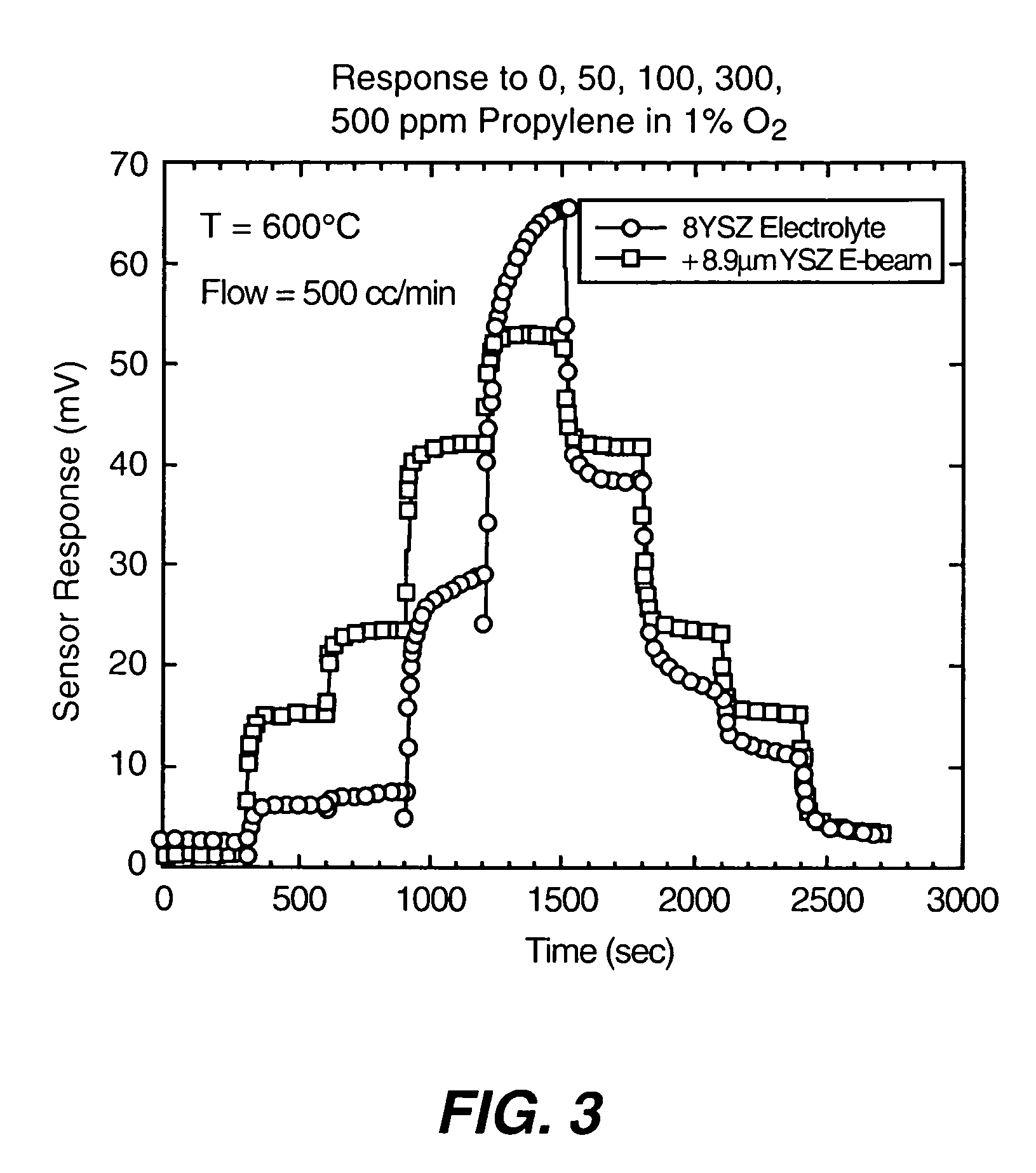Thin film mixed potential sensors
a technology of mixed potential and thin film, applied in the field of gas sensors, can solve the problems of poor gas access and less 3-phase interface, increase in response time, concomitant loss of sensor sensitivity and sensor response time, and inability to provide a mixed potential sensor
- Summary
- Abstract
- Description
- Claims
- Application Information
AI Technical Summary
Benefits of technology
Problems solved by technology
Method used
Image
Examples
Embodiment Construction
[0021]The sensor design of the present invention provides dense thin film electrodes deposited on an inert substrate in a non-intersecting, preferably parallel, geometry with a second layer of thin film electrolyte that partially covers the two electrode strips. The fabrication of sensors in this manner produces a device with a reproducible triple phase boundary. The triple phase boundary is the region where the gases come in contact with the electrode / electrolyte interface. If the YSZ electrolyte film were 100% dense, then the region is defined by the line at which the YSZ ends and the gas / electrode interface begins. If the YSZ is not completely dense, there is then gas diffusion through the electrolyte to the surface contact between the electrodes and the overlying electrolyte, where the electrode / electrolyte interface forms a triple phase boundary.
[0022]The fabrication process also produces a device that does not rely on gas diffusion through porous electrode materials and conseq...
PUM
| Property | Measurement | Unit |
|---|---|---|
| thickness | aaaaa | aaaaa |
| temperature | aaaaa | aaaaa |
| temperature | aaaaa | aaaaa |
Abstract
Description
Claims
Application Information
 Login to View More
Login to View More - R&D
- Intellectual Property
- Life Sciences
- Materials
- Tech Scout
- Unparalleled Data Quality
- Higher Quality Content
- 60% Fewer Hallucinations
Browse by: Latest US Patents, China's latest patents, Technical Efficacy Thesaurus, Application Domain, Technology Topic, Popular Technical Reports.
© 2025 PatSnap. All rights reserved.Legal|Privacy policy|Modern Slavery Act Transparency Statement|Sitemap|About US| Contact US: help@patsnap.com



